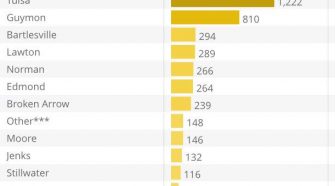India’s attempt to land an unmanned craft on the moon’s uncharted south polar region appears to have gone awry, when communication with the landing vehicle was lost moments before touchdown.
“Communications from lander to ground station was lost,” said Kailasavadivoo Sivan, chairman of the Indian Space Research Organisation early on Saturday. Data was still being analysed, he told a room full of distraught scientists at the agency’s tracking centre in Bengaluru.
Prime minister Narendra Modi, who was present at the Isro control centre, offered words of support to scientists before leaving the tracking centre.
The mission, which aimed to carry out a soft landing on the moon, is the most complex and ambitious space project that India has embarked upon. Only three other countries – Russia, the US and China – have managed such a landing.
The ISRO tweeted: “#VikramLander descent was as planned and normal performance was observed up to an altitude of 2.1 km. Subsequently, communication from Lander to the ground stations was lost. Data is being analyzed.”
Achieving a soft landing, where the lander is not damaged, is especially challenging. “It is very hard,” said Pallava Bagla, author and science editor for NDTV. “Isro has worked for more than 10 years to reach this point … This is rocket science, there can be failures. It is not that everything can go exactly in the copy book fashion.”
India’s achievements in space have been hailed by Modi as a symbol of the country’s rising ambition as a global power.
Modi later later said on Twitter: “We remain hopeful and will continue working hard on our space programme.”
India, he added, is proud of its scientists. “They’ve given their best and have always made India proud. These are moments to be courageous, and courageous we will be!”
The mission, which comes amid a renewed global interest in moon exploration, was watched closely by scientists around. It is hoped the rover, named Pragyan, which means “wisdom” in Sanskrit, would spend two weeks collecting crucial data about the composition of the moon’s surface.
It is due to explore craters which contain a fossil record of the early solar system, for clues on the origin and evolution of the Moon. It is also hoped Pragyan, a six-wheeled vehicle, could help scientists understand how much water the polar region contains.
Mathieu Weiss, a representative in India for France’s space agency CNES, said such information is vital to determining whether humans could one day spend extended periods there.
“India is going where probably the future settlements of humans will be in 20 years, in 50 years, 100 years,” Weiss told AFP.
Chandrayaan-2, which cost about $140m (£114m), far less than other missions, is an entirely indigenous project. “The lander, the rover, the rocket, the orbiter – everything was made in India,” said Bagla.
Bagla added that it is “a symbol that shows India is marching towards what prime minister Narendra Modi repeatedly calls his effort to make a new India”.
Sivan had described the prospect of the lander’s 15 minute descent – navigating its way autonomously – as “terrifying”.
Chandrayaan-2, he said, is the “most complex mission ever undertaken by Isro.”
As well as Chandrayaan-2, India has said it aims to send three astronauts into space by 2022.
















